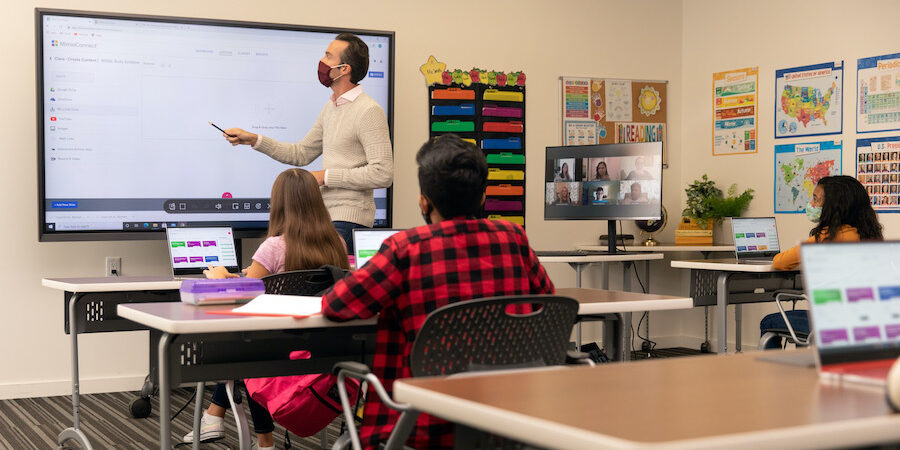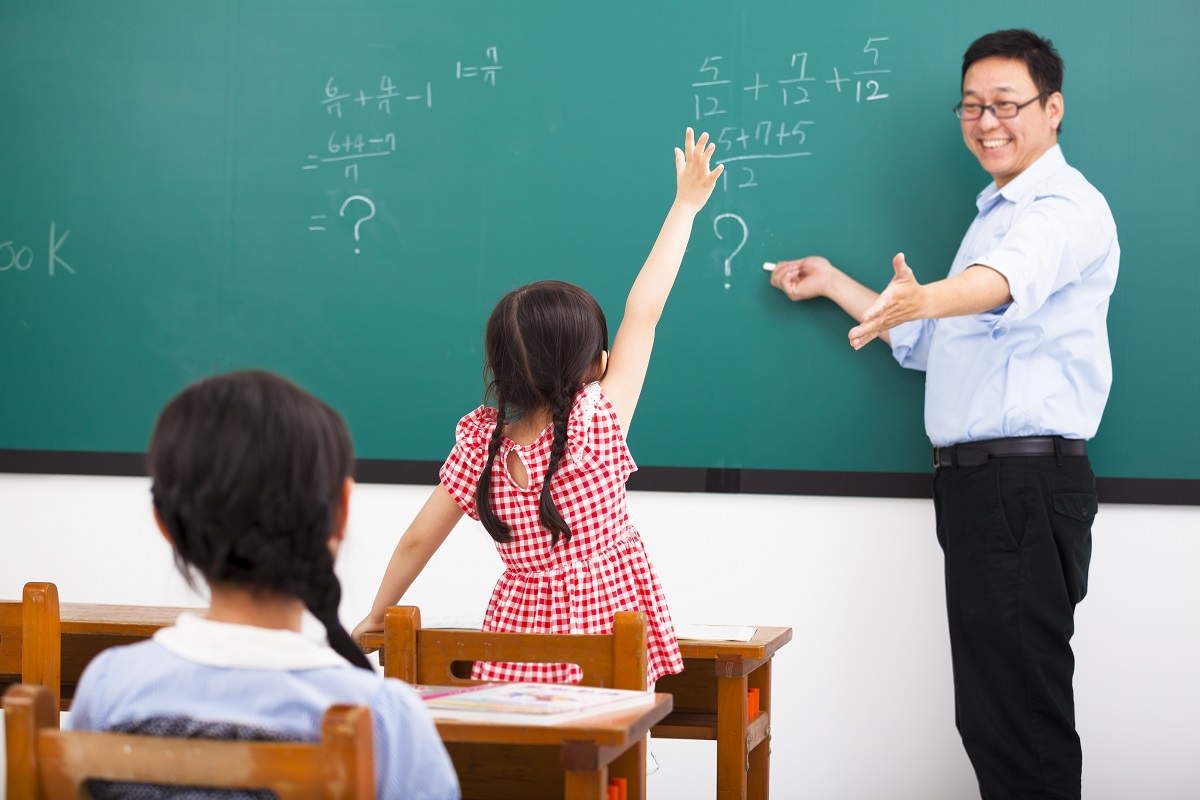Improve Your Child’s Performance with Primary Science Tuition Singapore
Wiki Article
Checking Out the Various Teaching Techniques in Main Scientific Research Education Today
The landscape of main science education is developing, with various teaching methods gaining prestige in contemporary class. Inquiry-based learning, hands-on experiments, and the integration of modern technology are redefining exactly how educators involve young minds. Furthermore, joint techniques and distinguished instruction are being employed to deal with the diverse needs of students, enhancing both involvement and understanding. As we examine these methodologies, concerns arise regarding their efficiency and the implications for future instructional techniques. What might these changes in technique mean for the future generation of learners?Inquiry-Based Learning
Inquiry-Based Learning (IBL) is a pedagogical technique that encourages trainees to discover clinical principles via doubting, investigation, and hands-on experimentation. This technique stresses the role of trainees as active participants in their knowing, promoting vital thinking and analytical abilities. By engaging with real-world concerns, trainees become curious and determined, which boosts their understanding of clinical concepts.In IBL, instructors work as facilitators, directing trainees as they browse their inquiries as opposed to delivering details straight. This student-centered method permits distinction, suiting various discovering paces and styles. Students create abilities in developing hypotheses, developing experiments, and examining data, which are critical for clinical proficiency.
Additionally, IBL promotes partnership among trainees, encouraging them to share concepts and findings. This collective inquiry promotes social skills and a feeling of neighborhood within the class. The process of query encourages resilience, as trainees learn to welcome failing as a tipping rock towards understanding.
Hands-On Experiments
Hands-on experiments are an important element of reliable science education and learning, matching the principles of inquiry-based understanding. These experiments permit pupils to involve directly with scientific concepts, cultivating a deeper understanding through experiential learning. By controling products and observing results, young students can understand abstract theories in tangible methods.Such activities promote crucial thinking and analytical skills, as students hypothesize outcomes, conduct experiments, and examine results. This process motivates them to ask inquiries, refine their understanding, and establish a scientific state of mind. Hands-on experiments can be tailored to diverse knowing styles, ensuring that all pupils have the possibility to engage meaningfully with the material.
In addition, hands-on experiments typically motivate collaboration among peers, advertising synergy and communication skills. Operating in teams allows trainees to share concepts, review findings, and gain from each other, which boosts their overall academic experience.
Incorporating hands-on experiments into the main scientific research curriculum not just improves the discovering atmosphere however also cultivates a long-lasting passion in scientific research. By actively taking part in their education and learning, students are more probable to create a passion for scientific query that extends past the class.

Modern Technology Assimilation
Integrating technology right into primary scientific research education has become increasingly crucial in fostering trainee involvement and improving learning end results. Making use of digital tools, such as interactive simulations, digital laboratories, and instructional software, provides trainees with possibilities to explore clinical concepts in cutting-edge methods. These resources assist in a much deeper understanding of intricate topics by allowing students to envision and control variables that would be unwise in a conventional classroom setting.In addition, innovation integration motivates customized learning experiences. Trainees can proceed at their very own rate, taking another look at difficult ideas with multimedia sources, which deal with various discovering designs. This adaptability not only sustains specific development but likewise cultivates a feeling of freedom in learners.
In addition, modern technology functions as a bridge to real-world scientific research, linking trainees with present study and specialist payments. Accessibility to online data sources and visit the site scientific journals widens pupils' viewpoints on clinical query and promotes vital believing skills.
Collaborative Discovering
Joint learning plays an essential duty in key scientific research education by fostering team effort and interaction abilities among students. This technique motivates learners to work together, share knowledge, and involve in analytical, which enhances their understanding of scientific ideas. By taking part in group activities, students learn to verbalize their ideas, listen to varied viewpoints, and negotiate options, all of which are crucial abilities in both scholastic and real-world contexts.
Research study indicates that joint understanding can bring about boosted motivation and engagement in scientific research topics, as trainees locate pleasure in common experiences (primary science tuition Singapore). Furthermore, this strategy prepares trainees for future collective ventures, outfitting them with the skills required for effective team effort in greater education and specialist settings. Eventually, accepting collective learning in main science education and learning can considerably enrich the learning experience and promote a much deeper understanding of scientific questions
Set Apart Instruction

Differentiated instruction can manifest in various means, such as differing the material, procedures, or products of knowing. Instructors may utilize tiered projects that offer varying levels of intricacy, permitting students to function at their respective preparedness levels. Additionally, flexible organizing strategies can assist in cooperation among trainees with various capacities, fostering peer knowing.
Assessment plays an important duty in this technique, as it notifies guideline and assists teachers recognize each advice trainee's distinct needs. Developmental evaluations, such as monitorings and tests, can guide instructors in changing their strategies to improve finding out outcomes. primary science tuition Singapore. Ultimately, by carrying out separated guideline in main scientific research education and learning, educators can grow a much more fair and effective learning atmosphere, encouraging all students to reach their full possibility in understanding scientific phenomena
Verdict
In recap, the diverse teaching methods in main science education and learning, including inquiry-based discovering, hands-on experiments, modern technology assimilation, collective understanding, and separated direction, collectively add to a much more reliable understanding environment. These approaches promote critical thinking, problem-solving abilities, and a deeper understanding of scientific ideas. By applying these approaches, educators can produce appealing and helpful classrooms that attend to the different needs of pupils, eventually promoting a lifelong rate of interest in scientific research and enhancing scholastic success.Inquiry-Based Learning (IBL) is an instructional approach that urges trainees to discover clinical concepts with doubting, examination, and hands-on trial and error.Collaborative understanding plays a vital duty in primary scientific research education and learning by fostering teamwork and communication skills among trainees.Research study indicates that joint knowing can lead to increased inspiration and involvement in science subjects, as students discover pleasure in common experiences.In cultivating a comprehensive learning atmosphere, differentiated direction emerges as a crucial strategy to accommodate the diverse demands and capacities of trainees in primary science education. Inevitably, by executing separated instruction in primary scientific research education, teachers can cultivate a much more fair and efficient discovering setting, empowering all pupils to reach their complete potential in comprehending clinical sensations.
Report this wiki page